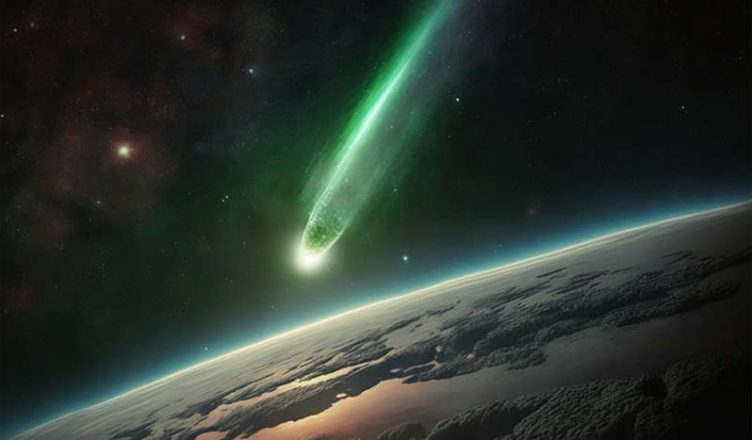In 2013, an astronomical research project called the “Dark Energy Survey” was officially launched with the primary goal of exploring the nature of “dark energy,” the mysterious force driving the accelerated expansion of the universe.
The project employed a high-definition digital camera known as the “Dark Energy Camera,” boasting a resolution of 570 million pixels. Between 2013 and 2018, this camera conducted six observing seasons, covering approximately 5000 square degrees of the southern hemisphere’s sky. It captured a vast number of images of the night sky in the near-ultraviolet, visible, and near-infrared wavelengths.

These images had not only scientific value in studying dark energy but also another purpose: assisting in the search for distant small celestial objects within our solar system. In 2021, researchers from the project developed an algorithm to identify slow-moving, faint, and previously hard-to-detect small celestial objects from the images captured by the Dark Energy Camera.
During this screening process, researchers identified a small celestial object approaching us, appearing to have a substantial size with an initial estimated diameter of at least 100 kilometers. This discovery quickly garnered the attention of the scientific community. Over time, scientists extensively observed and studied this object using various observational instruments, concluding that it was a super comet with a diameter of approximately 137 kilometers, making it the largest comet ever observed in human history.
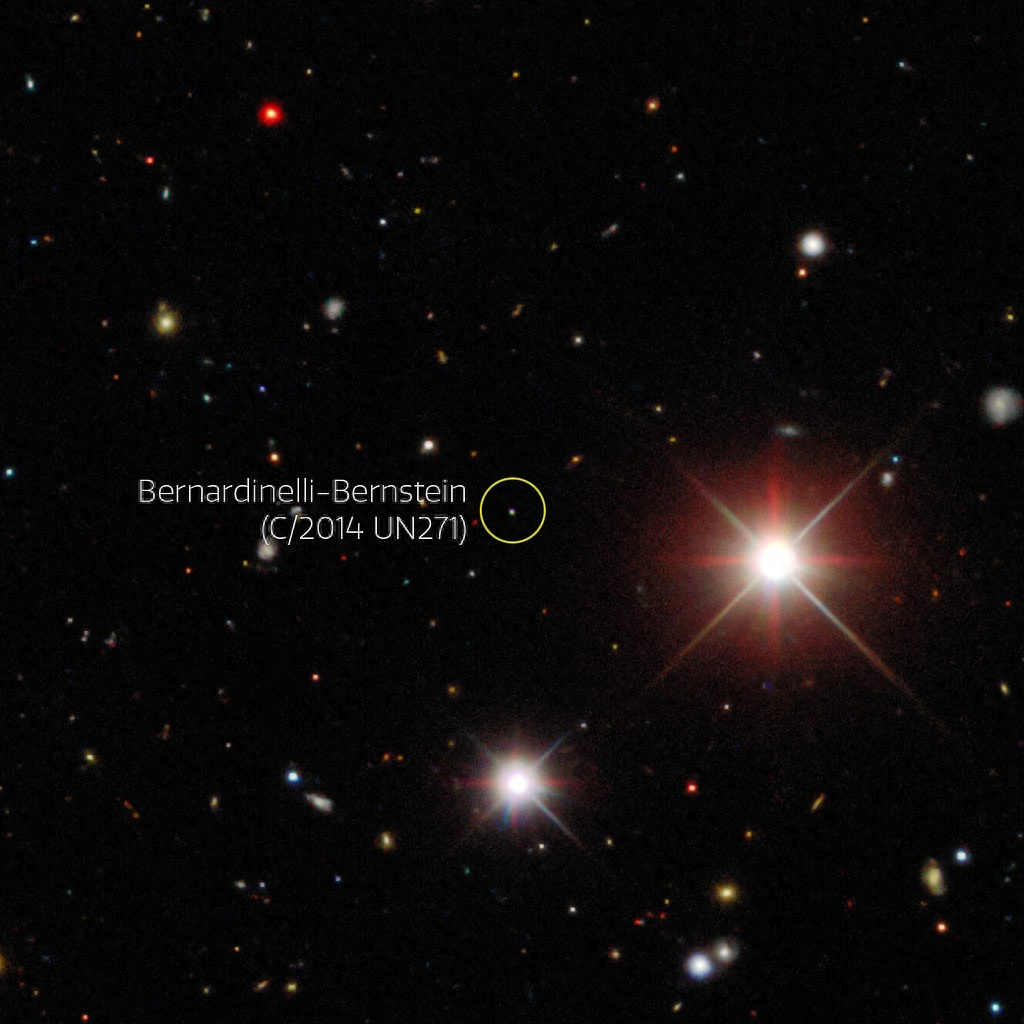
This super comet was subsequently named “C/2014 UN271,” and it first appeared in images from March 2014 when it was about 29 astronomical units away from Earth, roughly equivalent to the distance from Neptune to the Sun. However, as time passed, it came closer to Earth, implying that the largest comet in history was approaching our planet.
This is indeed a concerning development, considering that we are aware that the extinction of dinosaurs was caused by the impact of a small asteroid. Furthermore, the asteroid that led to the extinction of dinosaurs had a diameter of about 10 kilometers, whereas “C/2014 UN271” has a diameter of 137 kilometers. Although the material structure of comets is much looser than that of asteroids, a comet of such immense size is not to be underestimated.
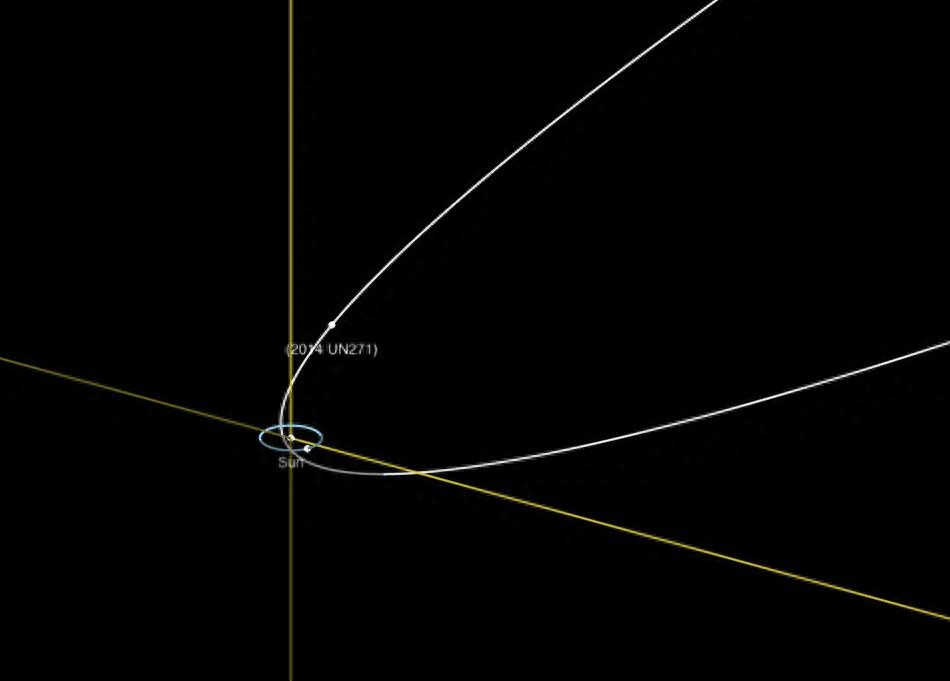
One can imagine that if this super comet were to collide with Earth, it would pose a significant threat to humanity. So, is it likely to collide with Earth? Let’s see what scientists have to say.
As of the current situation, “C/2014 UN271” is located in the constellation of Sagittarius in the sky, approximately 17.17 astronomical units from the Sun and about 17.3 astronomical units from Earth. Through long-term observation and analysis, scientists have determined that it is a long-period comet originating from the “Oort Cloud.” These comets have the characteristic of following extremely elongated elliptical orbits around the Sun, with their perihelion (closest point to the Sun) near the Sun and their aphelion (farthest point) very distant.
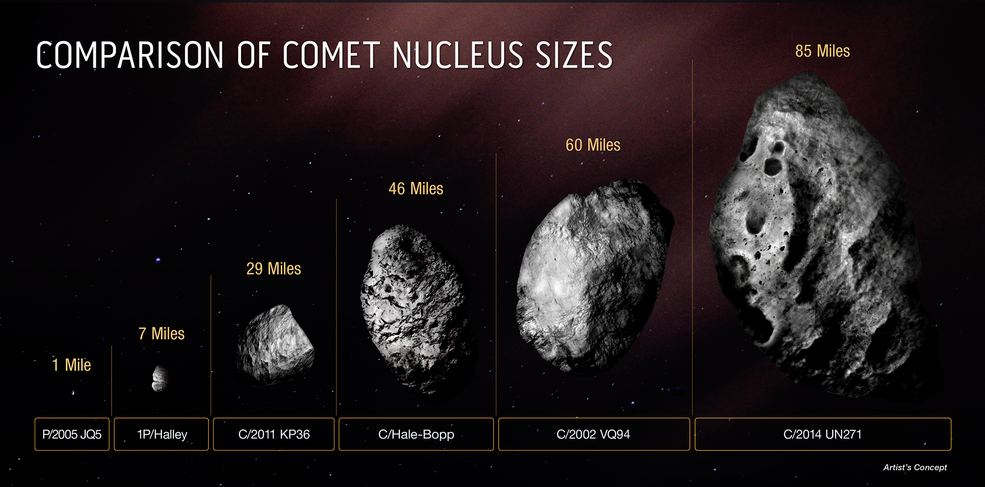
We know that the solar system has an “ecliptic plane,” where almost all major celestial bodies, including Earth, orbit. Observational data shows that the orbit of “C/2014 UN271” is not within this plane. In fact, it is currently moving from the southern sky to the northern sky, which means that this super comet will directly cross the “ecliptic plane” in the future.
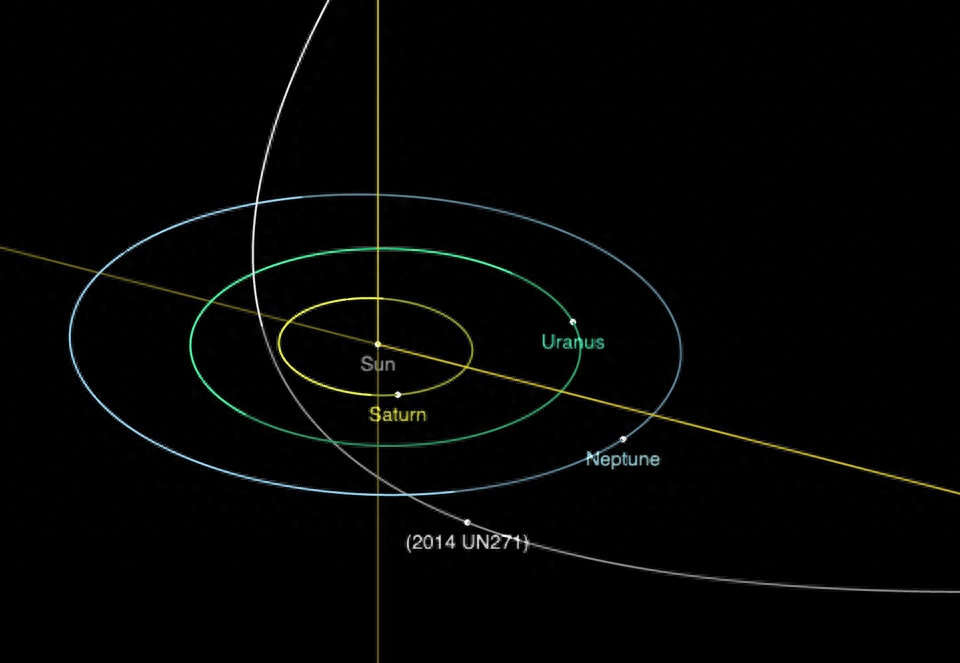
Theoretically, if the position at which “C/2014 UN271” crosses the “ecliptic plane” coincides with the position of Earth or is close to Earth, there is a possibility of a collision.
Based on the current trajectory of “C/2014 UN271,” it will reach its perihelion around January 23, 2031, at a distance of approximately 10.95 astronomical units from the Sun. Afterward, it will cross the “ecliptic plane” around August 8, 2031, at a distance of approximately 12 astronomical units from the Sun. During this process, the closest approach to Earth will occur around April 5, 2031, at a distance of approximately 10.1 astronomical units from Earth.
In other words, even though we currently see this super comet approaching Earth, such a situation will not persist indefinitely. After it reaches its perihelion point, it will gradually move away.
It’s worth noting that, due to its extreme distance, even when “C/2014 UN271” is closest to Earth, its apparent magnitude will only be around 13, making it impossible to see with the naked eye. To observe this largest comet in history, one would need a relatively large astronomical telescope.
More UFOs and mysterious files, please check out our YouTube channel: MysFiles
